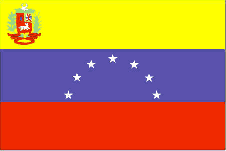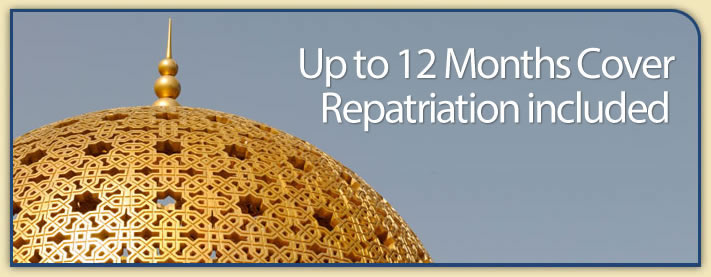Country Guide • Venezuela

Venezuela is bounded to the north by the Caribbean, to the east by Guyana and the Atlantic Ocean, to the south by Brazil, and to the west and southwest by Colombia.
| Official Name | Republic of Venezuela |
|---|---|
| Area | 912,050km² (352,143mile²) |
| Population | 24,654,694 |
| Continent | South America |
| Population per mile² | 70 |
| Capital City | Caracas |
| Religions | Roman Catholic 96%, Protestant 2%, other 2% |
| Language | Spanish (official), numerous indigenous dialects |
| Government | Federal Republic |
| Currency | Bolivar |
| GDP | $132.8 billion |
| GDP per Head | $5,500 |
| Natural Resources | Petroleum, natural gas, iron ore, gold, bauxite, other minerals, hydropower, diamonds |
| Land Use | Arable Land 3% |
| Agriculture | Corn, sorghum, sugarcane, rice, bananas, vegetables, coffee; beef, pork, milk, eggs; fish |
| Industry | Petroleum, iron ore mining, construction materials, food processing, textiles, steel, aluminum, motor vehicle assembly |
| Tourism | Venezuela is a country of striking natural beauty and dramatic contrasts: the snowcapped peaks of the Andes in the west; steamy Amazonian jungles in the south; the hauntingly beautiful Gran Sabana plateau. On the caribbean coast there are white-sand beaches fringed with coconut palms. Venezuela is home to South America's largest lake, Lake Maracaibo, and third-longest river, the Orinoco, and the world's highest waterfall, Angel Falls. It has a wide variety of exotic plants and animals, which include the jaguar, ocelot, tapir, armadillo, anteater, and the longest snake in the world, the anaconda |
| Natural Hazards | Subject to floods, rockslides, mudslides; periodic droughts |
| Health Risks | Cholera, dengue fever, hepatitis, malaria, yellow fever |
| Climate | The climate varies according to altitude. Lowland areas have a tropical climate. The dry season is from December to April and the rainy season from May to December. The best time to visit is between January and April. Temperatures range from 15 - 30°C. Rainfall ranges from 2 - 10 inches per month |
| Time | GMT/UTC-4 hours (- 5 hours in summer) |
| National Days | July 5 - Independence Day |
| Visas | UK and US nationals, Canadians, Australians, New Zealanders, South Africans and most Western and Scandinavian Europeans do not require a visa if they fly directly to Venezuela.When arriving by air, you can enter for up to 90 days on a tourist card issued before arrival by the airlines. You should have a valid return ticket with you. You must not overstay the 90 days as you may be arrested and fined when departing. Extensions of up to 60 days can be arranged at any DIEX (Department for Foreigners of Ministry of Interior) office on payments of a fee plus presentation of passport, tourist card, photograph and return ticket. All foreigners entering Venezuela by land require a valid visa; get one before you leave for South America. You should ensure that your passport has at least six months validity. If you are arriving overland, you need to obtain a visa from a Venezuelan consulate |
| British Embassy | Embassy Details |
Information Only
The content above is for information purposes only and we have tried to ensure that the information is as accurate as possible. We cannot accept any responsibility for any inconvenience, loss or injury as a result of the information above. You should always check and verify any critical information like visas, health and safety and customs with the relevant authorities before you travel since information can change at any time.



